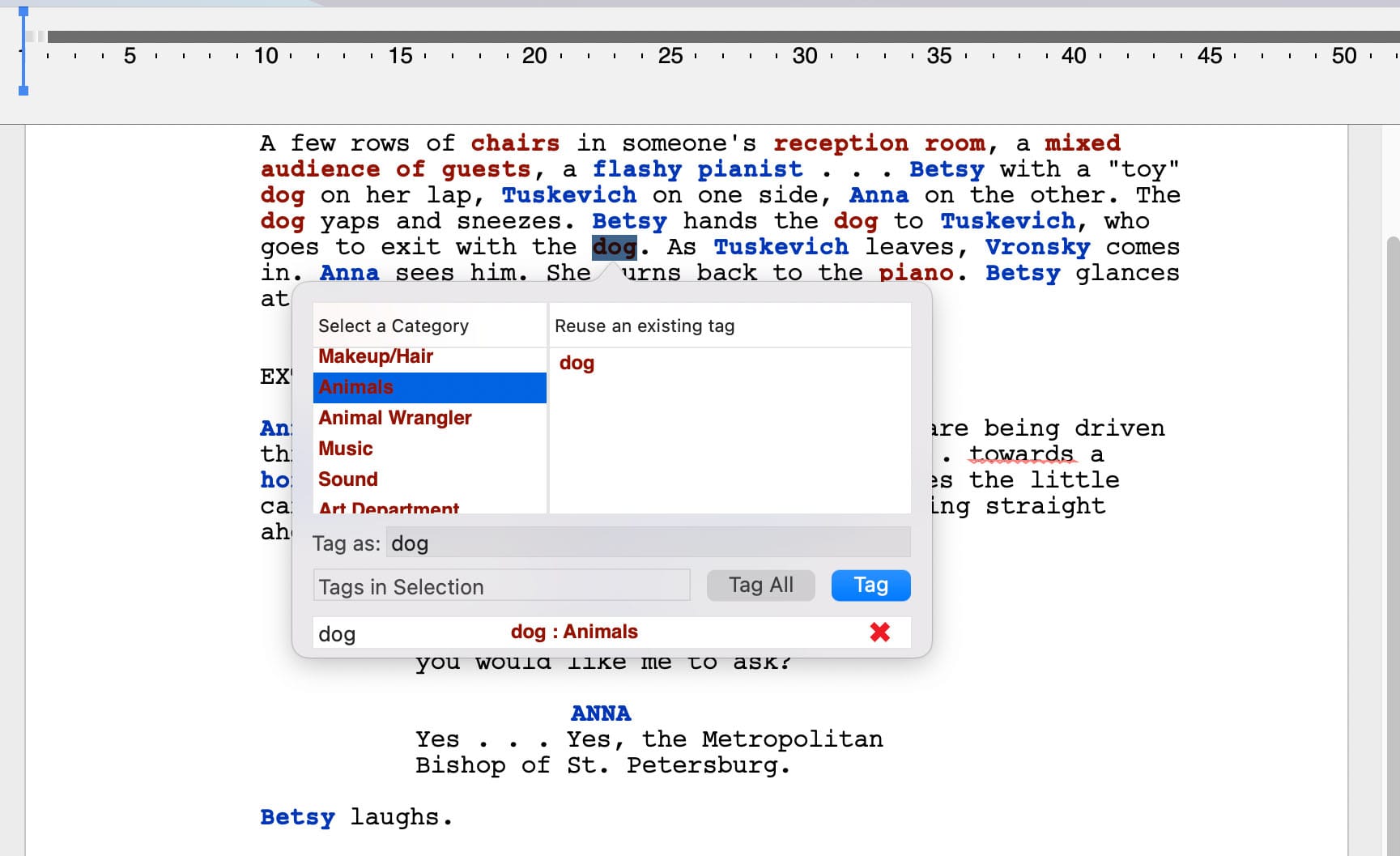
- FINAL DRAFT TAGGER TO MOVIE MAGIC SCHEDULING SOFTWARE
- FINAL DRAFT TAGGER TO MOVIE MAGIC SCHEDULING FREE
Another very useful feature helps you write a two-character dialogue with ease, just by pressing the SHIFT+TAB combination. Also contains a comprehensive Cheat function, that gives you an ability to slightly change margins and spacing while still staying within the guild standards. Comes with an iPartner tool to collaborate with other writers through internet in real time. Writing Featuresīesides doing all the formatting for you with the abovementioned ENTER and TAB system, creates an outline of your script, lets you navigate easily through the scenes and change their order. If you ask around, industry professionals will be praising one of those, depending on which one they are used to be working with.
FINAL DRAFT TAGGER TO MOVIE MAGIC SCHEDULING SOFTWARE
Second of the two mastodons in the scriptwriting software business, hard to differ from Final Draft by the amount of possibilities offered. Highly customizable and compatible with multiple devices and formats, Final Draft is a sure choice for professionals. Pros: Contains all the necessary features for maximum work efficiency.Ĭons: The price is surely unacceptable for aspiring filmmakers. There’s also a great function for revising the screenplay after it’s been locked - new content will be added in distinctive colored pages. The most powerful and exclusive feature here is undoubtedly Tagger 2 that lets you break down the script for all the production departments. And there’s even a huge base of character names (there are 90.000 of them), in case you’re having a hard time coming up with one. CollaboWriter lets you work on the same script online with other writers. ScriptNotes feature lets you hide your ideas directly in the script and open them in a pop-up window. Other than elegantly formatting your script, adding all the MOREs and CONTINIEDs, Final Draft auto-fills the sluglines and character names that were already used, offers a handy Outline and Index Card views and many more. Final Draft takes care of the rest, and offers, if needed, a wide range of additional tools. The two commands you are going to use for the most time are TAB and ENTER. The slogan says “Just add words”, and it’s very true. But unless you want to waste your time and stain your nerves, stay away from it. You surely can use Word as a scriptwriting tool. But most possibly you have the latter installed already. Production Toolsġ09$, comes in the package with Microsoft Office. But that’ll be the most you can get out of it. And by following a set of tutorials you might create your own template (the custom one isn’t very helpful) by setting up margins and spacing manually and then punch them in with the help of hotkeys you’ve created. Well, Word is the most popular word-processor. If you are really reluctant to pay for the screenwriting software, you can, by trying really hard, turn your Word into one. To see which of them suit to the maximum your personal resources and writing style. Hence, let’s try to compare the most popular screenwriting programs And although Romeo and Juliet was written just with a help of a parchment, some ink and a quill, Shakespeare didn’t have to give in his plays to studios, deal with producers, follow the writer’s guild standards and so forth.
FINAL DRAFT TAGGER TO MOVIE MAGIC SCHEDULING FREE
All of it does its best to free you from the daunting writer’s chores, like having to think about font sizes, margins, spacing and whatnot, and let you concentrate on the creative part of the process.

The company has also created a new online knowledge base - available on its Web site - to help with support issues.There’s a huge variety of screenwriting software nowadays.

The company acknowledged these problems and said that they’d be remedied by the time you read this. To compound the problem, Final Draft technical support was unreachable because of the company’s Kafkaesque phone system.

Even something as fundamental as printing a script caused an instant crash (though turning off the default Format Assistant feature prevented crashes). Cutting and pasting text was hit-or-miss. Paging down a script caused the screen to redraw poorly, leaving line artifacts.

While this sounds fantastic, version 7.0.0.33 was filled with bugs. This is helpful because it lets you review one section of a script as you write in another.Īnd version 7 includes a stand-alone application, called Tagger, that lets you break down and make annotations in a script (for elements such as characters, props, and wardrobe), which can then be exported to movie-production scheduling programs such as Write Brothers’ Movie Magic Screenwriter. Version 7 lets you view two sections of your script in its Panel view - either side-by-side or stacked one on top of the other.


 0 kommentar(er)
0 kommentar(er)
